-
 Bitcoin
Bitcoin $107,443.3008
-1.17% -
 Ethereum
Ethereum $2,494.2503
-0.63% -
 Tether USDt
Tether USDt $1.0003
0.00% -
 XRP
XRP $2.2496
2.23% -
 BNB
BNB $658.7569
0.63% -
 Solana
Solana $154.9826
1.94% -
 USDC
USDC $1.0000
0.01% -
 TRON
TRON $0.2799
1.07% -
 Dogecoin
Dogecoin $0.1659
-1.78% -
 Cardano
Cardano $0.5745
0.25% -
 Hyperliquid
Hyperliquid $39.7005
0.13% -
 Bitcoin Cash
Bitcoin Cash $519.5989
3.78% -
 Sui
Sui $2.7874
-2.40% -
 Chainlink
Chainlink $13.3762
-1.69% -
 UNUS SED LEO
UNUS SED LEO $9.0784
-0.64% -
 Avalanche
Avalanche $17.9846
-2.81% -
 Stellar
Stellar $0.2390
-0.06% -
 Toncoin
Toncoin $2.9028
0.25% -
 Shiba Inu
Shiba Inu $0.0...01147
-2.17% -
 Litecoin
Litecoin $86.6956
-1.27% -
 Hedera
Hedera $0.1508
-0.50% -
 Monero
Monero $322.6222
3.26% -
 Polkadot
Polkadot $3.4124
-2.99% -
 Dai
Dai $0.9999
0.00% -
 Bitget Token
Bitget Token $4.5434
-1.97% -
 Ethena USDe
Ethena USDe $1.0002
0.00% -
 Uniswap
Uniswap $7.1562
-2.61% -
 Aave
Aave $275.8830
-1.02% -
 Pepe
Pepe $0.0...09790
-4.04% -
 Pi
Pi $0.5018
-5.09%
How much principal is required for Bitcoin contract transactions? How to operate with small funds?
Bitcoin contract transactions allow trading with small funds using leverage, but require understanding principal amounts and effective risk management strategies.
May 05, 2025 at 07:00 pm
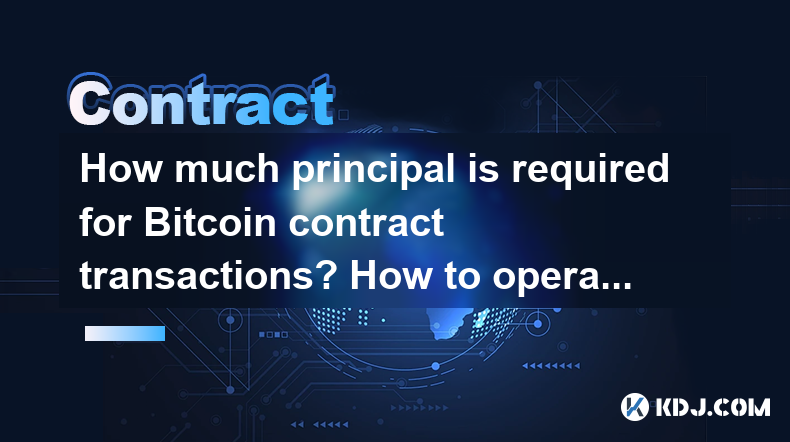
Bitcoin contract transactions, also known as Bitcoin futures or derivatives, have become increasingly popular among traders looking to speculate on the price movements of Bitcoin without actually owning the underlying asset. One of the key considerations for anyone interested in participating in these markets is understanding the amount of principal required to engage in Bitcoin contract transactions, as well as strategies for operating with smaller funds. In this article, we will delve into the specifics of principal requirements and explore methods for effectively managing Bitcoin contract transactions with limited capital.
Understanding Principal Requirements for Bitcoin Contract Transactions
The principal amount required for Bitcoin contract transactions can vary significantly depending on the platform you choose to trade on and the type of contract you are interested in. Typically, trading platforms require traders to deposit a certain amount of money, known as the initial margin, to open a position. This initial margin acts as a security deposit and is used to cover potential losses.
For example, on some platforms, the initial margin requirement for a Bitcoin futures contract might be around 10% to 20% of the total contract value. If you are looking to trade a contract worth $10,000, you might need to deposit between $1,000 and $2,000 as your initial margin. It's important to note that these requirements can change based on market volatility and the policies of the trading platform.
In addition to the initial margin, traders must also be aware of the maintenance margin, which is the minimum amount of equity that must be maintained in the trading account to keep the position open. If the account balance falls below this maintenance margin due to market movements, the trader will receive a margin call and may be required to deposit additional funds or close their position to meet the requirement.
Strategies for Operating Bitcoin Contract Transactions with Small Funds
Leverage is a key tool that traders with small funds can use to participate in Bitcoin contract transactions. Leverage allows traders to control a larger position with a smaller amount of capital. For instance, if a platform offers 10x leverage, a trader can control a $10,000 position with just $1,000 of their own money. However, it's crucial to understand that while leverage can amplify profits, it can also magnify losses, making it a double-edged sword.
To manage risk effectively, traders should consider using stop-loss orders. A stop-loss order is an instruction to close a position once it reaches a certain price level, helping to limit potential losses. For example, if you open a long position on Bitcoin at $50,000, you might set a stop-loss order at $48,000 to limit your loss to $2,000 per contract.
Position sizing is another critical aspect of trading with small funds. By carefully determining the size of each trade relative to your total capital, you can manage risk and avoid significant losses. A common rule of thumb is to risk no more than 1% to 2% of your total trading capital on any single trade. This means if you have $10,000 in your trading account, you should not risk more than $100 to $200 on any given trade.
Choosing the Right Trading Platform
Selecting the appropriate trading platform is essential for those looking to engage in Bitcoin contract transactions with small funds. Different platforms offer varying levels of leverage, margin requirements, and fees, all of which can impact your trading experience.
For instance, some platforms may offer higher leverage but also come with higher fees or more stringent margin requirements. It's important to research and compare different platforms to find one that aligns with your trading strategy and financial situation. Look for platforms that offer demo accounts, which allow you to practice trading without risking real money.
Additionally, consider the platform's user interface and available tools. A platform with a user-friendly interface and robust charting and analysis tools can make it easier to execute trades and monitor your positions effectively.
Executing Bitcoin Contract Transactions with Small Funds
To begin trading Bitcoin contract transactions with small funds, follow these detailed steps:
Choose a trading platform: Research and select a platform that offers the leverage and margin requirements suitable for your budget. Sign up for an account and complete any necessary verification processes.
Deposit funds: Fund your trading account with the amount you are comfortable risking. Remember, you will need to meet the platform's initial margin requirement to open a position.
Understand the contract specifications: Familiarize yourself with the details of the Bitcoin contract you wish to trade, including the contract size, expiration date, and trading hours.
Set up your trading strategy: Decide whether you want to take a long or short position based on your market analysis. Determine your entry and exit points, as well as your risk management strategy, including stop-loss and take-profit levels.
Place your order: Use the trading platform's interface to enter your order. Specify the type of order (market or limit), the quantity, and any stop-loss or take-profit levels.
Monitor your position: Keep an eye on your open position and be prepared to adjust your stop-loss or take-profit levels based on market movements. If the market moves against you and you receive a margin call, you may need to deposit additional funds or close your position.
Risk Management and Psychological Aspects
Effective risk management is crucial when trading Bitcoin contract transactions with small funds. Always ensure that you have a clear risk management plan in place before entering any trade. This includes setting stop-loss orders and adhering to your position sizing rules.
The psychological aspect of trading should not be underestimated. Trading with small funds can be emotionally challenging, as the potential for significant losses can be higher due to the use of leverage. It's important to maintain discipline and avoid making impulsive decisions based on emotions.
To help manage your emotions, consider keeping a trading journal where you record your trades, including your rationale for entering and exiting positions, as well as your emotional state during the trade. This can help you identify patterns and improve your decision-making process over time.
Additional Tips for Trading with Small Funds
Diversification can be a useful strategy for traders with limited capital. Instead of putting all your funds into a single Bitcoin contract, consider spreading your capital across multiple smaller positions. This can help reduce the impact of any single trade on your overall portfolio.
Continuous learning is also essential. Stay updated on market news and trends, and consider using educational resources provided by trading platforms or third-party websites to improve your trading skills. Participating in trading communities and forums can also provide valuable insights and support.
Lastly, be patient and realistic about your expectations. Trading with small funds requires a long-term approach, and it's important to set achievable goals and not expect overnight success.
Frequently Asked Questions
Q1: Can I start trading Bitcoin contract transactions with less than $1,000?
A1: Yes, it is possible to start trading Bitcoin contract transactions with less than $1,000, depending on the platform and the leverage offered. Some platforms may allow you to open positions with initial margins as low as $100. However, it's important to understand the risks associated with trading on such a small scale and to use leverage cautiously.
Q2: How does leverage affect my potential profits and losses?
A2: Leverage amplifies both your potential profits and losses. For example, if you use 10x leverage to open a $10,000 position with $1,000 of your own money, a 1% move in the market will result in a 10% change in your account balance. While this can lead to significant profits if the market moves in your favor, it can also result in substantial losses if the market moves against you.
Q3: What are the main differences between trading Bitcoin spot and Bitcoin contract transactions?
A3: Trading Bitcoin spot involves buying and selling the actual cryptocurrency, whereas Bitcoin contract transactions involve trading derivatives that derive their value from the underlying Bitcoin price. Spot trading requires you to own the asset, while contract transactions allow you to speculate on price movements without owning Bitcoin. Additionally, contract transactions often involve leverage and margin requirements, which can increase both potential profits and risks.
Q4: How can I improve my trading skills when starting with small funds?
A4: To improve your trading skills, start by using demo accounts offered by trading platforms to practice without risking real money. Additionally, educate yourself through online courses, webinars, and trading books. Joining trading communities and forums can also provide valuable insights and feedback from experienced traders. Keep a trading journal to track your progress and learn from your mistakes.
Disclaimer:info@kdj.com
The information provided is not trading advice. kdj.com does not assume any responsibility for any investments made based on the information provided in this article. Cryptocurrencies are highly volatile and it is highly recommended that you invest with caution after thorough research!
If you believe that the content used on this website infringes your copyright, please contact us immediately (info@kdj.com) and we will delete it promptly.
- Circle, Stablecoins, and National Banks: A New Era for Digital Finance?
- 2025-07-01 09:10:12
- Stablecoin Showdown: USD1 vs. USDC and the Regulatory Rumble
- 2025-07-01 09:10:12
- Qubetics, Crypto Investment, Hedera & Avalanche: Navigating the July 2025 Crypto Landscape
- 2025-07-01 08:50:12
- Kazakhstan's Crypto Reserve: Balancing Financial Stability and Digital Innovation
- 2025-07-01 09:15:11
- Ruvi AI: The 13,800% Bull Run Return That Could Outshine Tron
- 2025-07-01 09:20:12
- Ethereum, Cardano, SUI & OP: Navigating the Shifting Crypto Landscape
- 2025-07-01 08:50:12
Related knowledge
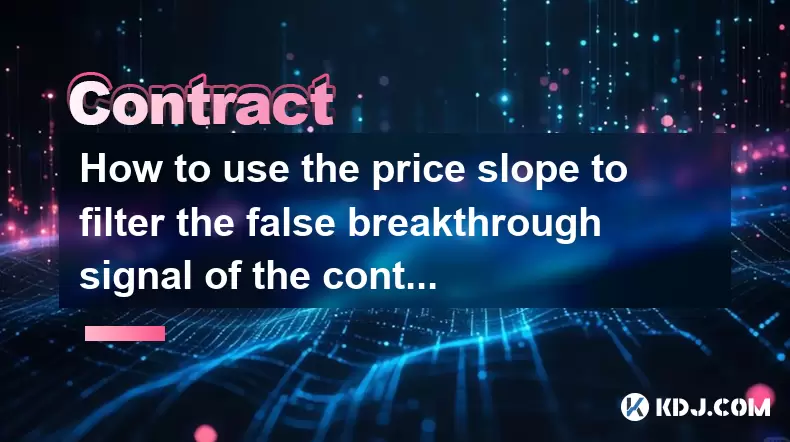
How to use the price slope to filter the false breakthrough signal of the contract?
Jun 20,2025 at 06:56pm
Understanding the Concept of Price Slope in Contract TradingIn contract trading, especially within cryptocurrency derivatives markets, price slope refers to the rate at which the price changes over a specific time period. It helps traders assess the strength and sustainability of a trend. A steep slope may indicate strong momentum, while a shallow slope...
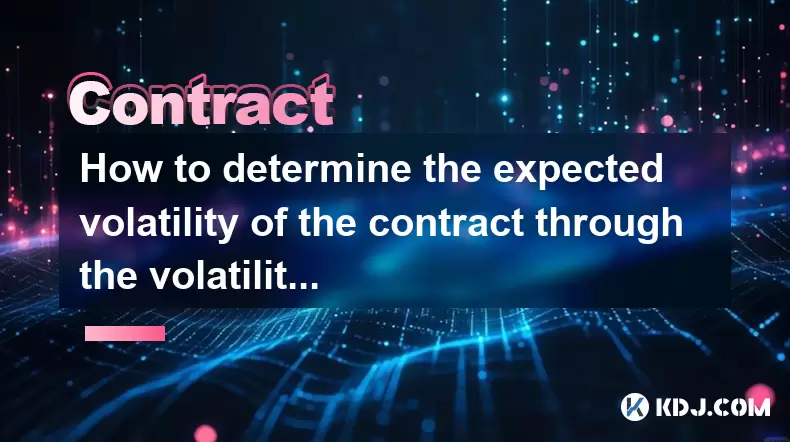
How to determine the expected volatility of the contract through the volatility cone?
Jun 19,2025 at 12:28pm
Understanding the Basics of Volatility in Cryptocurrency ContractsIn the realm of cryptocurrency trading, volatility is a key metric that traders use to assess potential risk and reward. When dealing with futures contracts, understanding how volatile an asset might become over time is crucial for position sizing, risk management, and strategy developmen...
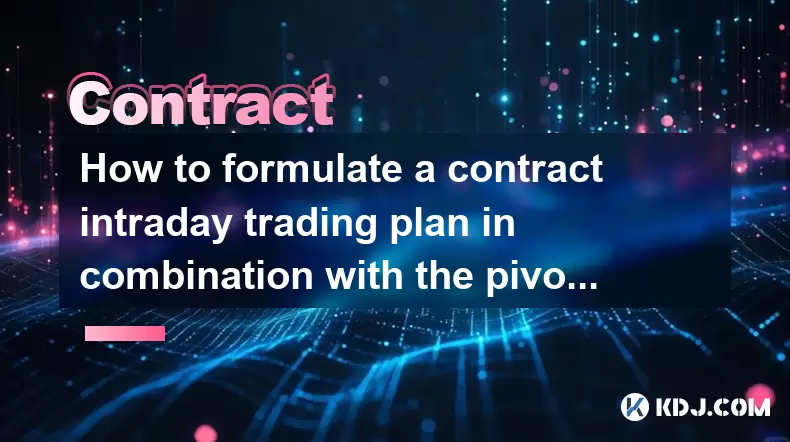
How to formulate a contract intraday trading plan in combination with the pivot point system?
Jun 21,2025 at 03:42pm
Understanding the Basics of Pivot Points in Cryptocurrency TradingPivot points are technical analysis tools used by traders to identify potential support and resistance levels. These levels are calculated using the previous day's high, low, and closing prices. In the context of cryptocurrency trading, where markets operate 24/7, pivot points help trader...
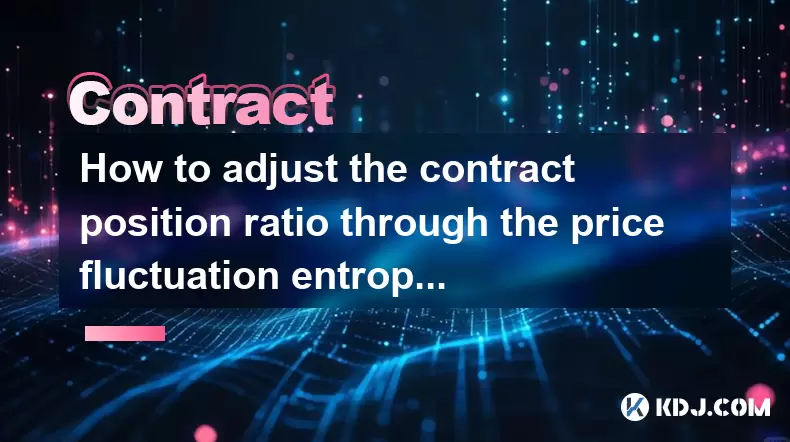
How to adjust the contract position ratio through the price fluctuation entropy?
Jun 22,2025 at 11:42am
Understanding Price Fluctuation Entropy in Cryptocurrency ContractsIn the world of cryptocurrency futures trading, price fluctuation entropy is a relatively new concept used to measure market volatility and uncertainty. It derives from information theory, where entropy refers to the degree of randomness or unpredictability in a system. In crypto contrac...
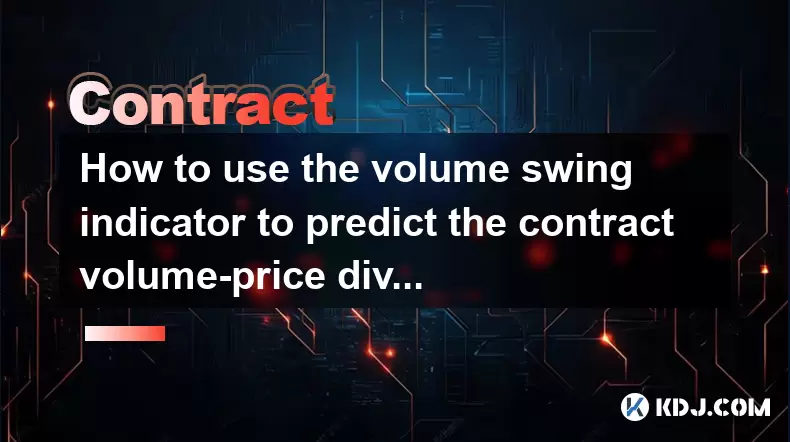
How to use the volume swing indicator to predict the contract volume-price divergence?
Jun 18,2025 at 11:42pm
Understanding the Volume Swing IndicatorThe volume swing indicator is a technical analysis tool used primarily in cryptocurrency trading to evaluate changes in volume over time. Unlike price-based indicators, this metric focuses solely on trading volume, which can provide early signals about potential market reversals or continuations. The key idea behi...

How to use the Gaussian channel to set the contract trend tracking stop loss?
Jun 18,2025 at 09:21pm
Understanding the Gaussian Channel in Cryptocurrency TradingThe Gaussian channel is a technical indicator used primarily in financial markets, including cryptocurrency trading, to identify trends and potential reversal points. It is based on statistical principles derived from the normal distribution, commonly known as the Gaussian distribution or bell ...

How to use the price slope to filter the false breakthrough signal of the contract?
Jun 20,2025 at 06:56pm
Understanding the Concept of Price Slope in Contract TradingIn contract trading, especially within cryptocurrency derivatives markets, price slope refers to the rate at which the price changes over a specific time period. It helps traders assess the strength and sustainability of a trend. A steep slope may indicate strong momentum, while a shallow slope...

How to determine the expected volatility of the contract through the volatility cone?
Jun 19,2025 at 12:28pm
Understanding the Basics of Volatility in Cryptocurrency ContractsIn the realm of cryptocurrency trading, volatility is a key metric that traders use to assess potential risk and reward. When dealing with futures contracts, understanding how volatile an asset might become over time is crucial for position sizing, risk management, and strategy developmen...

How to formulate a contract intraday trading plan in combination with the pivot point system?
Jun 21,2025 at 03:42pm
Understanding the Basics of Pivot Points in Cryptocurrency TradingPivot points are technical analysis tools used by traders to identify potential support and resistance levels. These levels are calculated using the previous day's high, low, and closing prices. In the context of cryptocurrency trading, where markets operate 24/7, pivot points help trader...

How to adjust the contract position ratio through the price fluctuation entropy?
Jun 22,2025 at 11:42am
Understanding Price Fluctuation Entropy in Cryptocurrency ContractsIn the world of cryptocurrency futures trading, price fluctuation entropy is a relatively new concept used to measure market volatility and uncertainty. It derives from information theory, where entropy refers to the degree of randomness or unpredictability in a system. In crypto contrac...

How to use the volume swing indicator to predict the contract volume-price divergence?
Jun 18,2025 at 11:42pm
Understanding the Volume Swing IndicatorThe volume swing indicator is a technical analysis tool used primarily in cryptocurrency trading to evaluate changes in volume over time. Unlike price-based indicators, this metric focuses solely on trading volume, which can provide early signals about potential market reversals or continuations. The key idea behi...

How to use the Gaussian channel to set the contract trend tracking stop loss?
Jun 18,2025 at 09:21pm
Understanding the Gaussian Channel in Cryptocurrency TradingThe Gaussian channel is a technical indicator used primarily in financial markets, including cryptocurrency trading, to identify trends and potential reversal points. It is based on statistical principles derived from the normal distribution, commonly known as the Gaussian distribution or bell ...
See all articles

























































































